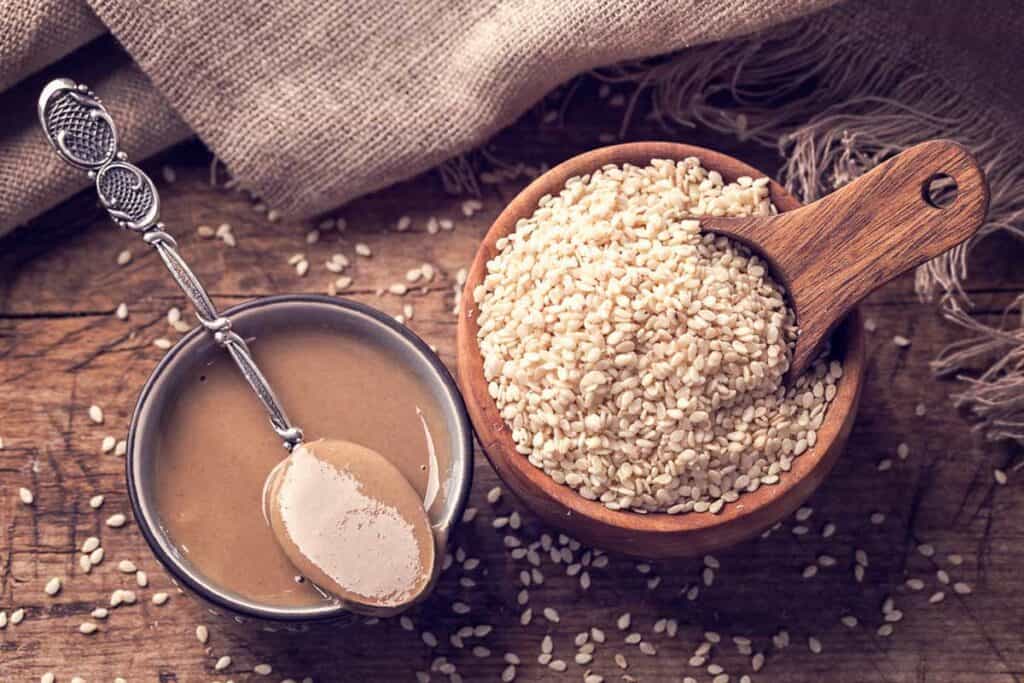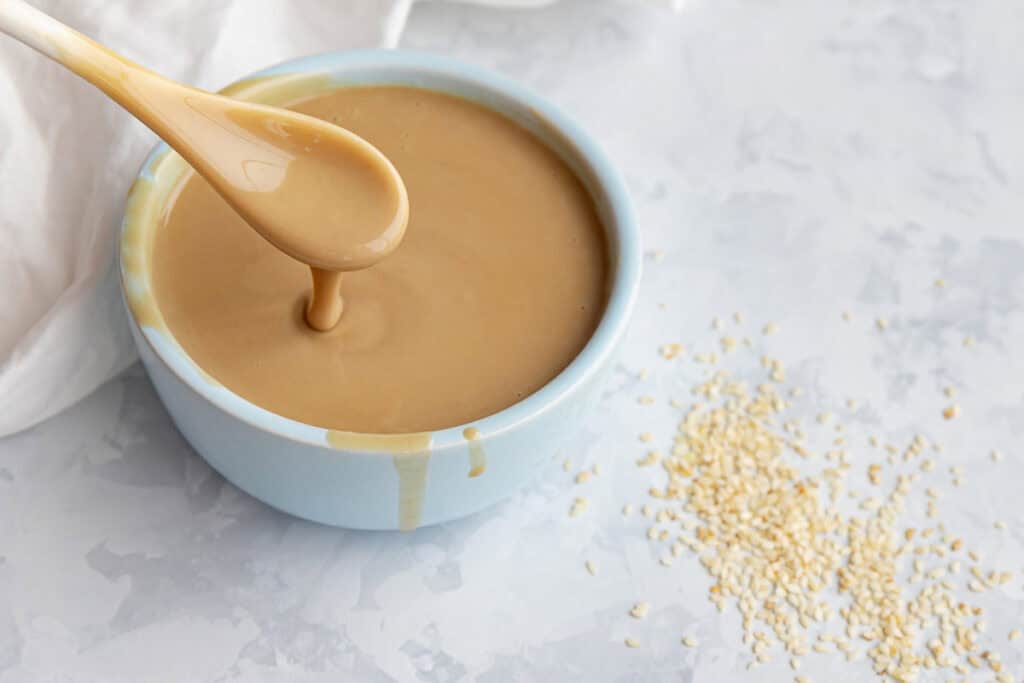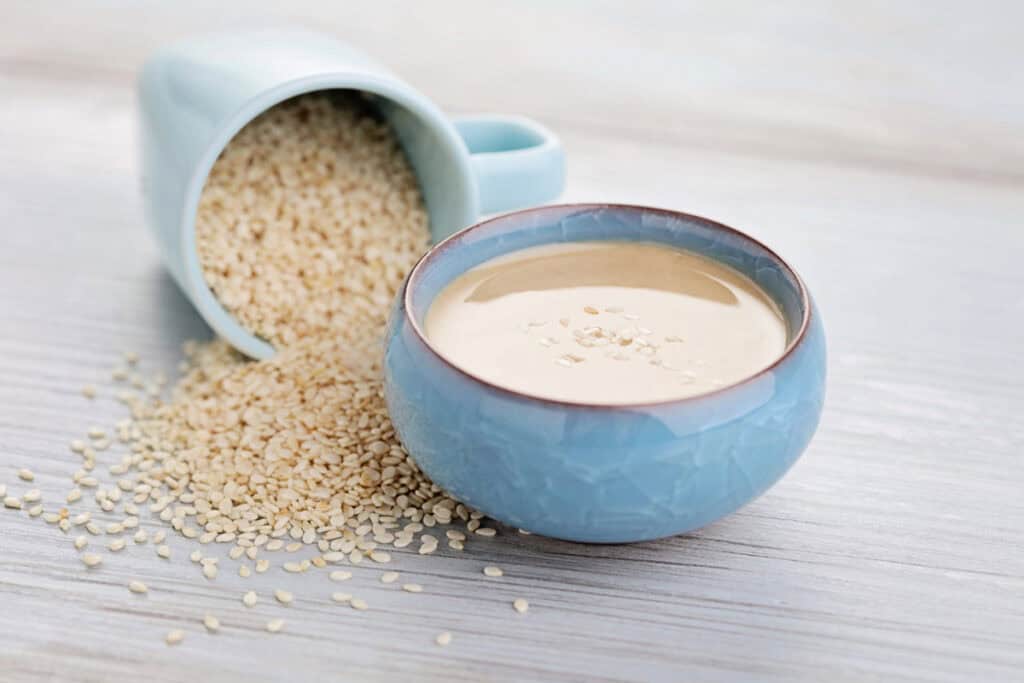Tahini is a rich sesame paste and an essential component in everything from hummus to sweet treats. However, since not all of us keep it on hand all the time, knowing which swaps to reach for depending on the situation is a valuable kitchen skill. These six top-notch tahini substitutes will maintain the unique flavor and creamy texture when you’re in a pinch.

A refresher course on tahini
Tahini is a creamy paste made from ground sesame seeds and is a key ingredient in many Middle Eastern and Mediterranean dishes. Its sweet and nutty taste with a slight bitterness adds complexity to a variety of recipes. People also love tahini for its smooth texture, which can improve sauces, dressings and even desserts without using dairy. Its versatility makes it important for both the flavor and texture of any dish it’s used in.
Using tahini substitutes
There are several reasons why you might look for a tahini substitute. For one, tahini is made primarily from sesame seeds, which are common allergens. If you or someone you’re cooking for has a sesame allergy, finding an alternative is crucial. Additionally, tahini is rich in fats, and although they’re mostly healthy fats, you might need to cut down on fat intake for health reasons. Tahini can also be pricey and not always easy to find in stores, making substitutes a more practical option in some cases.
The best tahini alternatives
Using tahini will always be preferable if a recipe calls for it, but there are plenty of good options if you need to make an adjustment. It’s important to consider the role of tahini in the dish you’re making when choosing an appropriate substitute. Is the tahini used mostly for flavor or for texture? Knowing this will help guide you toward the best substitute choice.

DIY tahini
The easiest substitute for store-bought tahini is to make it yourself. Homemade tahini not only tastes fresher but also lets you control the ingredients and consistency. Start with sesame seeds and toast them gently in a pan until they’re golden and aromatic. Once toasted, blend them in a food processor, adding a neutral oil like sesame or canola gradually until you achieve a smooth, pourable paste. This method is straightforward and results in a versatile tahini that is ready for any recipe.
Sunflower seed butter
Sunflower seed butter is a great alternative to tahini, especially since both are seed-based spreads. While sunflower butter is generally thicker and has a slightly different nutritional profile — with more protein, calories and fats — it can be used in a one-to-one ratio as a tahini substitute in most recipes.
For a closer match to tahini’s flavor, especially in savory dishes, choose a sunflower butter that doesn’t contain added sugars. You can also improve its taste by blending it with a little sesame oil, making it an almost identical and easy swap for tahini. A jar of sunflower seed butter is worth keeping around since it’s also a great substitute for peanut butter.
Cashew and almond butters
Cashew and almond butters are solid picks if you’re looking to swap out tahini. They bring a similar mild richness that fits right into recipes where you’d usually use tahini, though they don’t have that slight bitterness tahini does.
Cashew butter is super versatile and great for things like dips and dressings. Almond butter steps up with a bunch of fiber and a smooth flavor that’s easy to love in both sweet and savory dishes. Both are straightforward substitutes and used cup for cup in place of tahini.
“When I’m making hummus and realize we are out of tahini, I replace it with an equal amount of almond butter. No one in my family is the wiser, and they always gobble it up!”
— Sage Scott, Sage Alpha Gal
Greek yogurt
Swapping tahini with Greek yogurt will change the flavor profile a bit, but it can work wonders in the right dishes. Greek yogurt isn’t ideal when tahini’s role is to balance out sweet flavors, like when drizzled over sweet potatoes or roasted vegetables. However, in zesty dips or creamy dressings, Greek yogurt’s thick and creamy texture makes it a decent stand-in. It adds a bit of tang, too, which can bring a fresh twist to your dish.
Pumpkin seed butter
Pumpkin seed butter is a fantastic alternative to tahini if you’re looking for something allergy-friendly and packed with nutrients. Made from ground, de-shelled pumpkin seeds, called pepitas, it boasts a creamy texture that holds together well without the oil separating too much. Flavor-wise, it’s a bit more bitter and has a green hue, making it a natural choice for recipes like pesto. Just be sure to opt for an unsweetened, organic version to get the best results in your dishes.
Sesame oil
Sesame oil can be a handy substitute for tahini, especially when you’re looking to capture that signature sesame flavor in marinades and salad dressings. Since it comes from the same plant as tahini, the flavor profiles are quite similar. However, keep in mind that sesame oil is liquid, so it won’t replicate the creamy texture of tahini in recipes that depend on it for body. It’s also richer in oil content, so you might want to use less. Start with about half the amount normally called for tahini and adjust according to your taste.

Remember this
There might come a time when you’re all set to cook, but realize tahini is missing from your pantry. Whether it’s due to dietary restrictions, allergies or a simple shortage, you’ll need a suitable substitute. Fortunately, there are various alternatives like nut and seed butters that offer a similar creamy texture, perfect for dishes like hummus and dips. For those avoiding nuts and seeds, Greek yogurt can be a good option. No matter which substitute you pick, you might need to tweak your recipe a bit to match the original taste and texture of tahini, so be prepared to experiment.
Gina Matsoukas is the writer, photographer and recipe creator of Running to the Kitchen. Focusing on healthy, seasonal, whole-food recipes, her work has been featured in various online and print publications including Food Network, Prevention Magazine and Women’s Health. Gina lives in central New York, where she enjoys an active outdoor life.